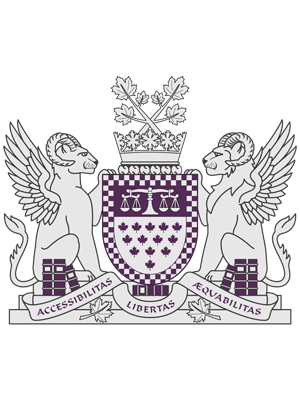The Court
-
25
judges
-
59
hearing locations
-
3200+
days in court yearly
-
5200+
proceedings instituted yearly
The Tax Court of Canada was established in 1983 pursuant to the Tax Court of Canada Act as a continuation of the Tax Review Board (initially the Income Tax Appeal Board). The Court is independent of the Canada Revenue Agency and all other departments of the Government of Canada. It is a neutral adjudicator of the appeals before it.
The Tax Court of Canada is a superior, bilingual, bijural and itinerant court. Individuals and companies come to our Court to litigate with the Government of Canada on matters arising under legislation over which the Court has exclusive original jurisdiction. The Court also hears references from the Canada Revenue Agency to provide interpretations of the legislation within its areas of jurisdiction.
Parties who appear before the Tax Court of Canada include self-represented individuals, accountants and lawyers for individuals and corporations, as well as lawyers from the Department of Justice representing the interests of the Canada Revenue Agency in addition to other Government of Canada departments.
All of the Tax Court of Canada files are public and can be accessed by anyone, unless a confidentiality order has been issued. The same applies to hearings, which are open to the public unless an in camera hearing has been ordered.
We at the Tax Court of Canada are committed to providing the public with an accessible and efficient appeal process and to working together to maintain a fair and independent Court.

On the right side of the image we have a circle with the word 'Vision' on top and underneath it indicates: Our vision is to be recognized nationally and internationally as a self-governing and avant-garde body distinguishing itself by.
Five circles surround the left side of the vision circle. The words Excellence, Efficiency, Skill, Technology and Clarity appear in these circles.
On the left side of the 5 circles is a description for each element.
- The excellence of its services
- Its highly skilled workforce
- The efficiency with which it communicates with its partners, clients and employees
- Its use of the most advanced technology
- The straightforwardness of its rules and procedure
